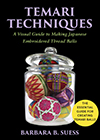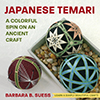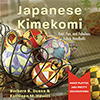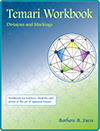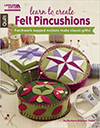Membership in the JTA and Techniques Certification by the Japan Temari Association
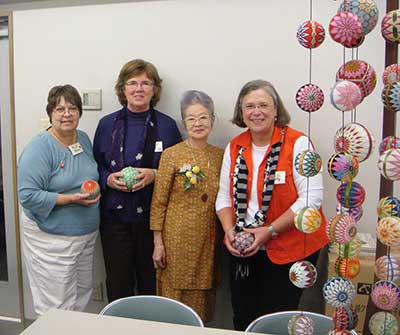
In late June of each year, JTA judges gather to evaluate students' work and award certification at one of four levels. We work with the head of the international group of JTA members (Chidori Temari Group) throughout the year to prepare temari and patterns to submit for judging.
Barb is retired from assisting students through the certification process. Anyone can still take her online courses and enjoy them without persuing certification through JTA. However, if you'd like to get certified, please contact Jen Weber (cleverbunnystudio.com). Jen is a wonderful temari teacher and you'll love working with her!
Level 1 Basic (Honka) Certification
Good execution of stitching is the important thing about this level. You can apply for this level after one year of temari study, having successfully mastered techniques learned in Barb's Level 1 course. By this time, you will have completed 20 - 30 temari. You can apply for levels 1 and 2 at the same time (if you have completed both courses or have equivalent experience). When applying for Level 1, you submit one photo of superior quality for each:
- Simple 4 division temari stitched in squares (shikaku)
- Simple 6 division temari stitched in tri-wing or trefoil (mitsubane-kikkou kagari)
- Simple 8 division temari stitched in merry-go-round (jyouge douji kagari)
- Simple 12 division temari stitched in kiku herringbone (uwagake chidori kagari)
Level 2 Advanced (Koutouka) Certification
For Level 2, excellent stitching quality is important as well as being able to communicate to someone else how you stitched the temari in your pattern. You should have completed 40 -50 temari before applying for L2. Using current JTA vocabulary is very important. All patterns are written in English using popular tranlations used by most temari stitchers. The JTA does not require you to write in Japanese. The temari designs do not have to be your original work so only your technical proficiency is judged, not design. You can learn the many skills for making these more advanced temari and learn how to write patterns using JTA vocabulary in Barb's Level 2 course. Learning to write patterns is also very important in keeping a notebook of your stitching, with directions, diagrams, and photographs. When applying for Level 2, you submit photos of superior quality and written directions (in English) with diagrams for:
- Three combination 8 division temari
- Three combination 10 division temari
New in 2016: The judges look at your photo and diagram. They see the English text and rely on your teacher's recommendation that it is worthy of passing. Your pattern text will not be translated into Japanese.
Level 3 Teacher (Shihan) Certification
This is one of the most challenging levels and may be applied for two years after receiving Level 2 certification. You are required to design eight original temari and write the patterns. Since upon successful completion, the JTA will certify you as a teacher, you should submit temari that demonstrate a wide range of divisions, markings, and stitching techniques, with intricate and more challenging designs. Three of the temari you make are mailed to the JTA for them to keep and use as examples and for sale to support the organization. Or you can request to have them mailed back to you.
Level 4 Master (Kyoujyu) Certification
Six original temari and patterns should be submitted for the JTA to keep. All work needs to be of superior quality. You can apply for this level three years after receiving Level 3 certification. When you apply for this level, you work directly with the head of JTA Chidori Temari group (for international students).
Temari courses based on the curriculum of the Japan Temari Association
Membership and Certification in the JTA
